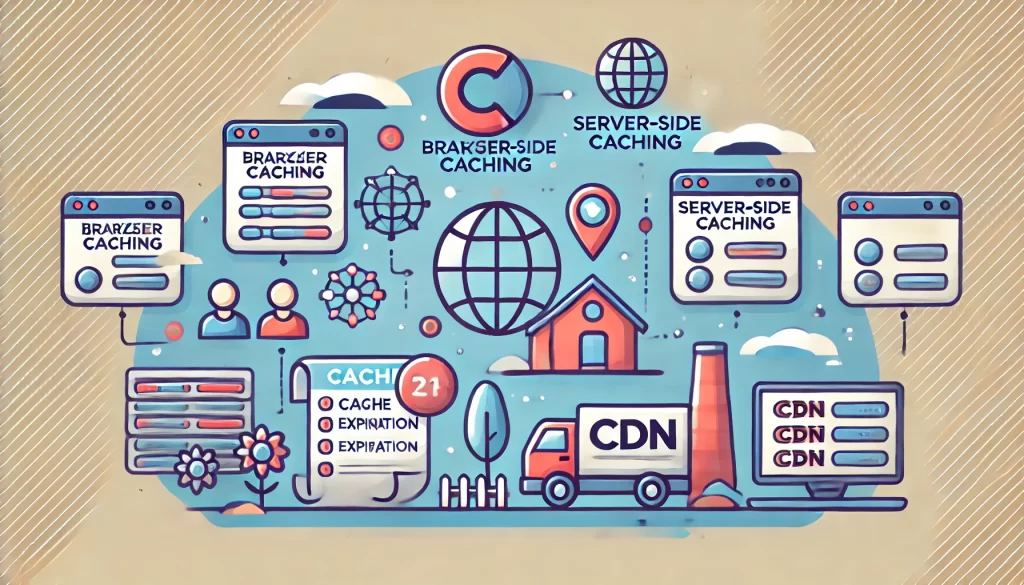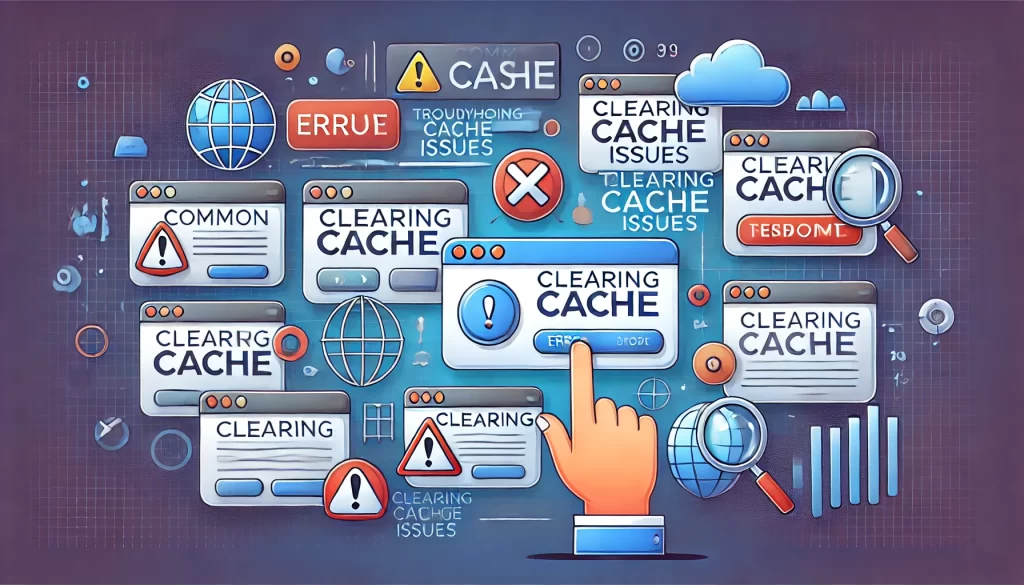What is Cross-Browser Cache Management?
Cross-browser cache management involves handling cached data across different web browsers. Cached data, such as images, scripts, and other resources, helps browsers load websites faster by storing copies of commonly used elements. However, cache can sometimes cause issues like outdated content or errors. Proper management ensures that you get the most up-to-date version of a site across all browsers you use, improving both performance and user experience. Cache management can be complex because each browser has its way of handling cache. This article will walk you through how to manage cache across popular browsers and compare how each one handles cache.

Clearing Browser Cache Across All Major Browsers
Clearing your browser’s cache is essential for resolving various issues like outdated content or slow browsing. Each browser has a different process for clearing cache, but they all follow similar principles. Below is a guide on how to clear cache in the most commonly used browsers: Chrome, Firefox, Edge, and Opera.
Suggested Posts:
• Opera GX and Opera Cache Management
• FAQs and Community Resources for Cache Management
• Caching Concepts and Best Practices
How to Clear Cache in Chrome
- Open Chrome and click the three vertical dots in the upper-right corner.
- Select More Tools > Clear Browsing Data.
- In the window that pops up, select Cached images and files.
- Choose the Time range (e.g., Last hour, 24 hours, All time).
- Click Clear data.
How to Clear Cache in Firefox
- Open Firefox and click the three horizontal lines in the upper-right corner.
- Select Options.
- Go to the Privacy & Security tab.
- Under the Cookies and Site Data section, click Clear Data.
- Select Cached Web Content and click Clear.
How to Clear Cache in Edge
- Open Edge and click the three horizontal dots in the upper-right corner.
- Select Settings.
- Under Privacy, search, and services, find Clear browsing data.
- Click Choose what to clear.
- Select Cached images and files and click Clear Now.
How to Clear Cache in Opera
- Open Opera and click the three horizontal lines in the upper-left corner.
- Go to Settings.
- Under the Advanced tab, select Privacy & Security.
- Click Clear browsing data.
- Choose Cached images and files and click Clear data.

Keyboard Shortcuts for Clearing Cache (Edge, Chrome, Firefox, Opera)
Keyboard shortcuts offer a quick and efficient way to clear cache in various browsers.
Chrome
- Windows: Press Ctrl + Shift + Delete.
- Mac: Press Cmd + Shift + Delete.
Firefox
- Windows: Press Ctrl + Shift + Delete.
- Mac: Press Cmd + Shift + Delete.
Edge
- Windows: Press Ctrl + Shift + Delete.
- Mac: Press Cmd + Shift + Delete.
Opera
- Windows: Press Ctrl + Shift + Delete.
- Mac: Press Cmd + Shift + Delete.
These shortcuts will open the browser’s “Clear Browsing Data” menu, where you can choose to clear cached data, cookies, and browsing history.
Suggested Posts:
• Cross-Browser Cache Management
• The Ultimate Guide to Browser Caching
• Microsoft Edge Cache Management
Browser-Specific Comparisons
Different browsers handle caching in distinct ways. Understanding these differences can help you manage cache more effectively and ensure a consistent experience across browsers.
Edge vs. Opera GX: Which Browser Handles Cache Better?
When comparing Microsoft Edge and Opera GX (a gaming-focused browser), both browsers have strong caching mechanisms, but they handle them differently.
- Edge: Edge uses a built-in cache system that integrates well with Windows, providing efficient storage and retrieval. It also benefits from Microsoft’s ongoing updates, ensuring improvements in cache management and speed.
- Opera GX: Opera GX offers a unique feature set aimed at gamers, including a high degree of control over caching. It allows users to limit the amount of cache stored and even control how much system resources (like RAM and CPU) the browser can use. This level of customization can be useful if you want to avoid excessive cache buildup or if you are trying to optimize performance for specific tasks.
Both browsers are excellent at managing cache, but Opera GX offers more granular control, which may appeal to users who want to fine-tune their browsing experience.
Cache Settings for Chrome vs. Firefox
Both Google Chrome and Mozilla Firefox offer solid caching settings, but they vary in terms of features and flexibility.
- Chrome: Chrome provides automatic caching for commonly accessed files, and it is generally efficient in how it stores cache. It also offers developer tools for inspecting cache, which can be useful for web developers. However, Chrome does not give users a lot of control over cache storage settings.
- Firefox: Firefox allows for more manual control over cache settings. Users can change the amount of space used for cache storage and even disable cache entirely. This makes Firefox a more flexible option for advanced users who want fine control over caching behavior.
Overall, Chrome tends to be more automated and efficient out of the box, while Firefox offers more control and customization for users who need it.
FAQs About Cross-Browser Cache Management
1. Why should I clear my browser cache?
Clearing your browser cache helps resolve issues like outdated content, slow page load times, and problems with loading new versions of websites. It ensures that you are viewing the most up-to-date content.
2. How often should I clear my browser cache?
Clearing your browser cache is not something that needs to be done regularly unless you experience issues like slow performance or outdated pages. If your browser starts to act sluggish, clearing the cache is a good first step in troubleshooting.
3. Can clearing the cache cause any problems?
Clearing the cache can temporarily slow down websites because the browser has to re-fetch all resources from the server. However, once the cache is rebuilt, the website should load faster again.
4. Does each browser handle cache differently?
Yes, each browser has its own way of handling cache, including different methods of storing cached data and different settings for cache size. Some browsers offer more customization options than others.
5. How can I manage cache across multiple browsers?
Managing cache across multiple browsers involves clearing the cache regularly on each browser and configuring browser settings to ensure efficient caching. You can also use tools or extensions to synchronize cache settings if needed.
6. Does cache management affect website performance?
Yes, proper cache management can greatly improve website performance by speeding up page load times. However, improperly configured cache can lead to issues like outdated content or slower page loads.
Suggested Posts:
• FAQs and Community Resources for Cache Management
• Advanced Cache Management Tools
• Microsoft Edge Cache Management
Key Takeaways
Effective cross-browser cache management is essential for ensuring fast, efficient, and consistent browsing across multiple platforms. Each browser has its way of handling cache, but understanding how to clear and manage cache in browsers like Chrome, Firefox, Edge, and Opera ensures that users can enjoy the best browsing experience possible.
By following simple steps to clear the cache, utilizing keyboard shortcuts, and understanding the specific caching behavior of different browsers, you can enhance both your browsing speed and your web development process. Whether you’re troubleshooting performance issues or simply maintaining a smooth experience, cache management is a key skill for all web users.
- Clearing cache in popular browsers like Chrome, Firefox, Edge, and Opera can help resolve performance issues and improve website loading speeds.
- Each browser has its cache management features, with some offering more control than others (e.g., Opera GX and Firefox).
- Keyboard shortcuts for clearing the cache make the process faster and more efficient.
- Proper cache management ensures you always see the latest content on websites and enhances your browsing experience.
By understanding how to manage cache across different browsers, you can improve your browsing efficiency and troubleshoot issues with ease.